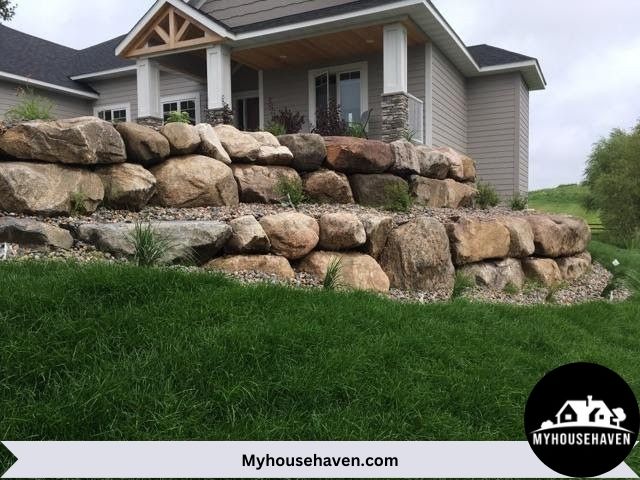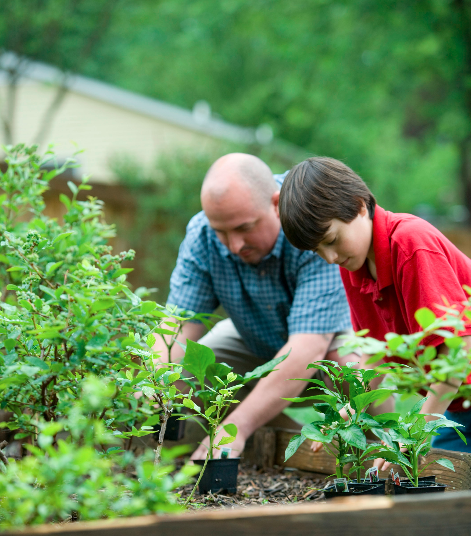Boulder Retaining Wall Adds Rustic Beauty to the Outdoor Space. A natural stone retaining wall made of locally sourced boulders has been constructed along the slope at the back of the yard. The rough textured tan and gray rocks give the impression of an assembly of stones that were naturally deposited there over time. In contrast with the formality of standard wooden fences or concrete retaining barriers, this boulder wall embellishes the landscape with an air of relaxed countryside charm. Its rugged aura perfectly complements the informal plantings and trees behind it for a seamlessly harmonious blend of cultivated ground and surrounding wild areas.
What is a Boulder Retaining Wall?
A boulder retaining wall is a type of low-rise barrier typically made of large rocks or boulders. It is designed to hold back or stabilise soil or gravel on sloping land. By stacking heavy stones or boulders in a solid construction, the wall creates an embankment that prevents erosion and keeps planting beds or yard areas level. As an alternative to wooden or concrete retaining walls, a boulder design adds a rustic, natural aesthetic and requires no mortar or other bonding agents.
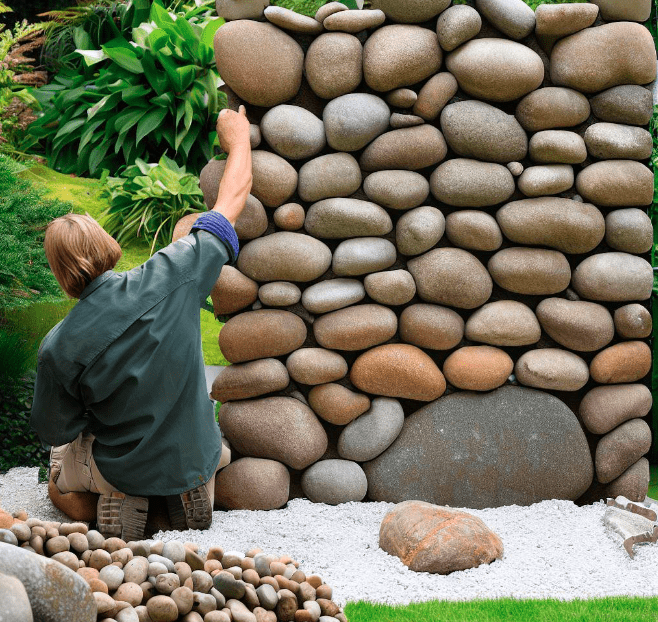
Do boulders make good retaining walls?
Boulders can indeed make excellent retaining walls due to their dense, heavy composition. As large rocks native to the landscape, boulders contribute an authentic, earthy ambiance when used to form retaining barriers. Their irregular shapes interlock securely without mortar, creating sturdy structures that withstand pressure from behind. Properly installed through careful stacking, boulder walls provide long-lasting soil retention in a way that harmonizes with natural surroundings.
How long do boulder retaining walls last?
Boulder retaining walls are an exceptionally long-lasting option for soil retention and slope stabilization. When properly constructed through the careful selection and placement of durable stone, boulder walls can remain structurally sound for many decades with little maintenance required. The interlocking fit of their uneven forms forms a stable foundation that endures weathering and erosion forces over generations. With no binding mortar or elements to deteriorate, boulder retaining walls offer enduring garden structures for property owners
Also Read: How to Speed Up Grout Drying Time
Pros of a Boulder Retaining Wall:
- Rustic, natural appearance complements gardens and wooded areas
- can be built to curve and meander
- Provides seating areas when built with wide capstones
- Long-lasting and low-maintenance without mortar
- A permeable design won’t cause drainage issues
- Can incorporate planting pockets between boulders
Cons of a Boulder Retaining Wall:
- Requires heavy equipment to move large boulders
- Professional installation is mostly recommended for structural walls
- Loose rocks may shift over time if not stacked properly
- Not recommended for steep slopes without geogrid reinforcement
- Irregular shapes make walls thicker, block-retaining walls
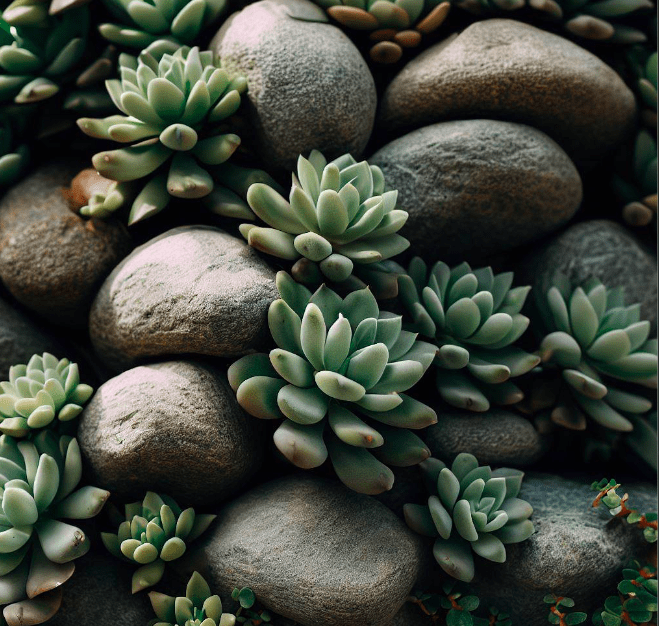
Also read: Weeb Room Decor Ideas 2024
Construction Methods for Boulder Retaining Walls
There are three main techniques for building boulder retaining walls:
Dry Stack (Gravity Wall) Method:
The Dry Stack (Gravity Wall) Method is a technique used in constructing retaining walls where stones or blocks are stacked on top of each other. The dry stack method relies on the sheer mass of the boulders to keep the wall in place. The boulders interlock tightly, and gravity holds them together. This type works for walls up to 4 feet tall.
Wet-Laid (Mortared) Method:
Mortar is use to stabilize boulders in the wet-laid method. The Wet-Laid (Mortared) Method is a construction technique used for building retaining walls where stones are held together. Mortared boulder walls have thinner profiles than dry-stacked walls. Mortar adds strength but reduces permeability and drainage. The mortared method is best for walls over 4 feet tall.
Combination Method:
Some walls use both dry stacking and mortared construction. Large boulders are dry-stacked, while smaller filler rocks are mortared between the main rocks. Weep holes are added for drainage. This combines the look of dry-stacked walls with the strength of mortared walls.
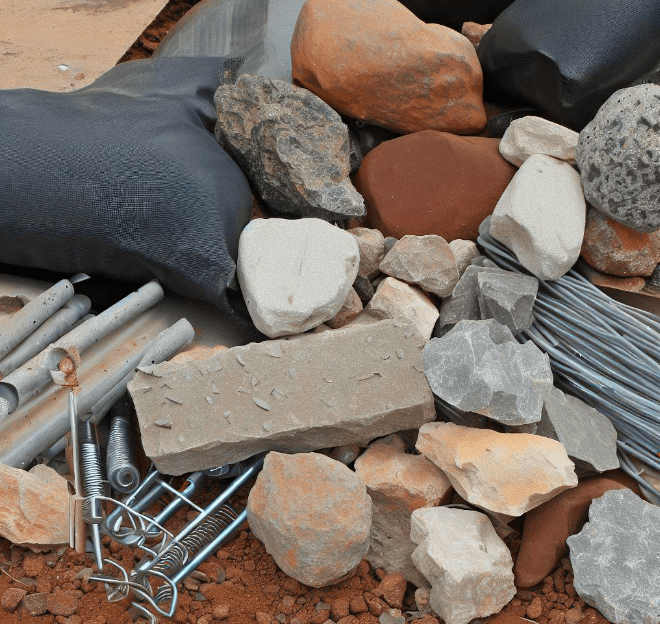
What are the benefits of boulder walls?
Boulder walls, also known as retaining walls or rock walls, offer several benefits in various applications. Here’s a brief explanation of their advantages:
- Erosion control: Boulder walls effectively prevent soil erosion by holding back and stabilizing soil on slopes. They can be particularly useful in areas prone to landslides or where erosion is a concern.
- Structural support: These walls provide structural support to prevent the collapse or movement of soil, rocks, or other materials. They can used to create terraces or level areas on slopes, allowing for safer construction or landscaping.
- Aesthetics: Boulder walls can enhance the visual appeal of outdoor spaces. They add a natural and rugged charm, blending well with the surrounding landscape. These walls can designed in various shapes and sizes to complement the overall aesthetics of the environment.
- Increased usable space: By creating terraces or leveling steep slopes, boulder walls can help maximize usable space in hilly or sloping areas. This can be advantageous for gardening, landscaping, or creating functional outdoor areas.
Choosing Rocks for Boulder Retaining Walls
Boulder retaining walls work best with rugged, irregularly shaped rocks at least 8–12 inches thick. The boulders should vary in size, from small filler rocks to larger rocks over 3 feet wide. Stones with flat bottoms and tops allow for sturdy stacking. Granite, limestone, and sandstone are common boulder materials. Avoid thin or rounded stones that won’t stack well.
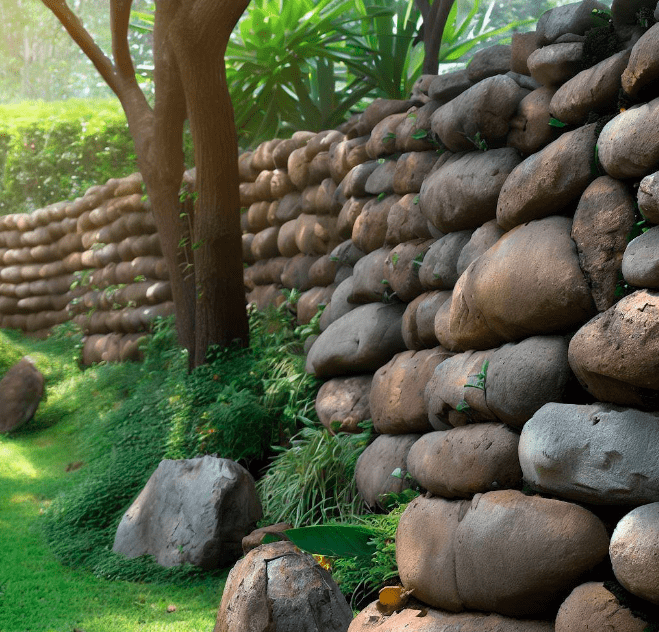
Also read: Cutelilkitty8 Unique Digital Phenomenon
Boulder Retaining Wall Cost:
Boulder retaining walls cost $25–$50 per square foot, on average. Shorter gravity walls under 3 feet tall range from $15 to $30 per square foot. Taller structural walls cost $30–$60 per square foot. Factors affecting the cost include:
- Wall height and length
- Boulder size and type
- Dry stack versus mortared construction
- Use of heavy equipment for installation
- Whether a stonemason is required
- Excavation challenges
- Addition of drainage materials or geogrid
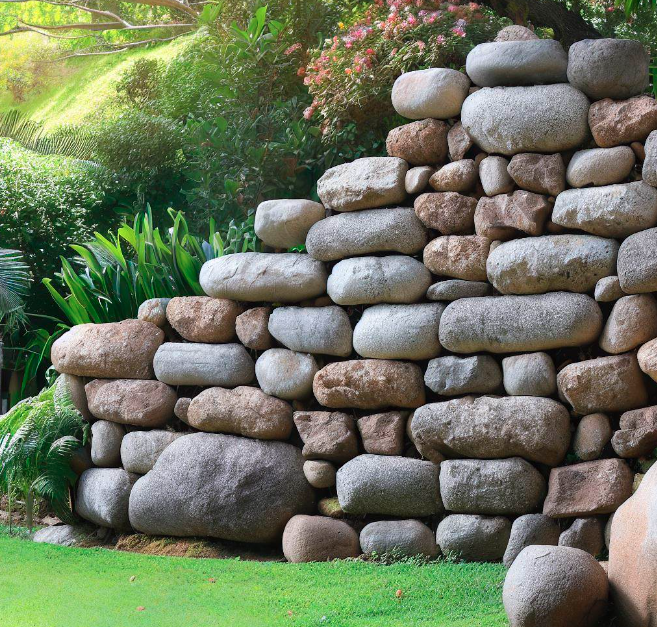
Creative Boulder Retaining Wall Ideas
- Dry Stacked Flat Boulders: Use flat sandstone or limestone boulders tightly stacked side-by-side.
- Mortared Stone Wall: Mortar smaller filler stones between large boulders for a structural wall.
- Seating Wall: Build the wall 25–30″ tall and top it with wide capstones for built-in seating.
- Mixed Retaining Wall: Combine boulders with wall blocks to make curves, corners, and steps.
- Boulder Planters: Leave gaps between boulders for planting flowers, grasses, or succulents.
Boulder retaining walls bring natural style to landscapes with their bold, asymmetric rock designs. When properly constructed, they make rugged and long-lasting retaining walls. Consider a boulder wall with drainage and geogrid reinforcements for your landscape.
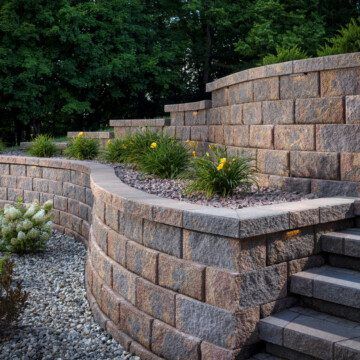
Boulder Sourcing and Transportation
- Quarries offer boulders, or rocks can be gathered locally. Delivery fees may apply.
- Special equipment like conveyors, cranes, or boom trucks may be needed to move and place large boulders.
- Some boulder suppliers have stone yards where you can hand-select rocks.
Wall Batter (Lean)
- Dry-stacked walls should be built with a slight inward slope or batter.
- The wall can lean 2–5 degrees towards the soil it is retaining. This helps counteract forces from the soil.
- Mortared walls can be built more vertically but still benefit from a slight backward batter.
Boulder Retaining Wall Foundation
- Excavate a footing trench the width of the wall and 6–12 inches deep.
- Fill the trench with compacted gravel, then level it with a layer of compacted sand.
- This provides a stable base and helps prevent settling and shifting.
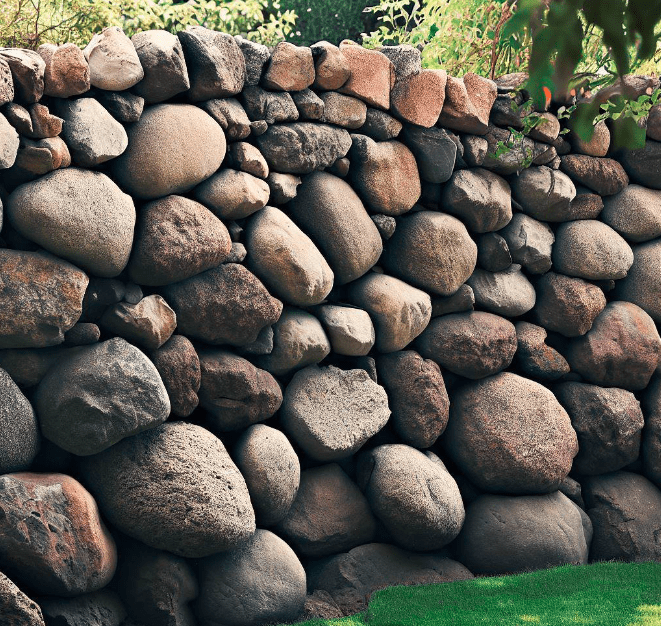
Conclusion
Boulder retaining walls are an aesthetically pleasing and robust result for landscaping requirements, especially in areas with rocky terrain. They give strength, life, and beauty to your geography as they’re made from 100 natural gravestones with no complements, enhancing the look of out-of-door spaces. The process of erecting a boulder retaining wall involves sourcing the boulders, which can generally be set up at the original chases. There are also professional services like Stonewall Inc., trusted for their high-quality boulder retaining walls and creative natural gravestone outcroppings.

